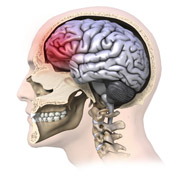Research and Innovation, UNL Office of

Center for Brain, Biology, and Behavior: Faculty Publications
Document Type
Article
Date of this Version
2017
Citation
Calvi et al. BMC Res Notes (2017) 10:479 DOI 10.1186/s13104-017-2805-4.
Abstract
Objective: Hundreds of scientific publications are produced annually that involve the measurement of cortisol in saliva. Intra- and inter-laboratory variation in salivary cortisol results has the potential to contribute to crossstudy inconsistencies in findings, and the perception that salivary cortisol results are unreliable. This study rigorously estimates sources of measurement variability in the assay of salivary cortisol within and between established international academic-based laboratories that specialize in saliva analyses. One hundred young adults (Mean age: 23.10 years; 62 females) donated 2 mL of whole saliva by passive drool. Each sample was split into multiple- 100 μL aliquots and immediately frozen. One aliquot of each of the 100 participants’ saliva was transported to academic laboratories (N = 9) in the United States, Canada, UK, and Germany and assayed for cortisol by the same commercially available immunoassay.
Results: 1.76% of the variance in salivary cortisol levels was attributable to differences between duplicate assays of the same sample within laboratories, 7.93% of the variance was associated with differences between laboratories, and 90.31% to differences between samples. In established-qualified laboratories, measurement error of salivary cortisol is minimal, and inter-laboratory differences in measurement are unlikely to have a major influence on the determined values.
Included in
Behavior and Behavior Mechanisms Commons, Nervous System Commons, Other Analytical, Diagnostic and Therapeutic Techniques and Equipment Commons, Other Neuroscience and Neurobiology Commons, Other Psychiatry and Psychology Commons, Rehabilitation and Therapy Commons, Sports Sciences Commons


Comments
Copyright © The Author(s) 2017. This article is distributed under the terms of the Creative Commons Attribution 4.0 International License.